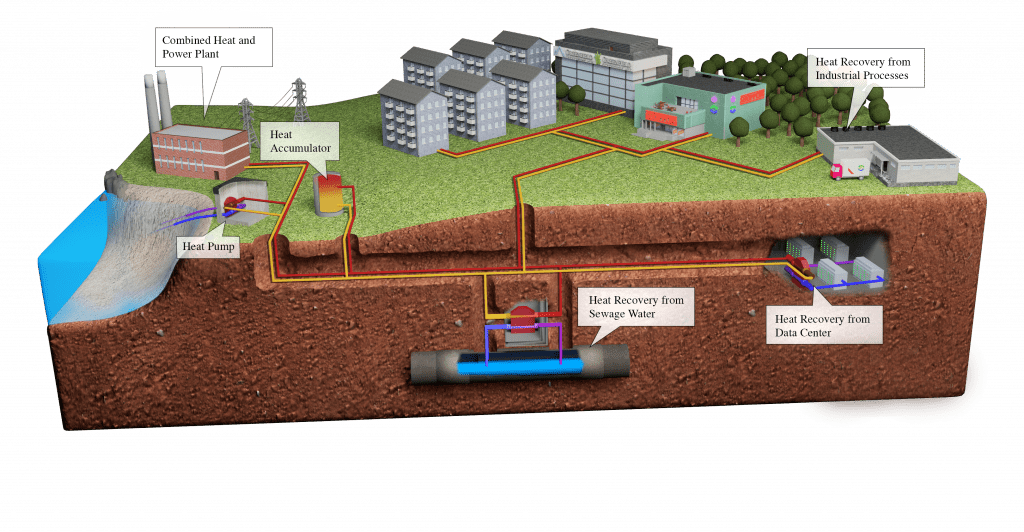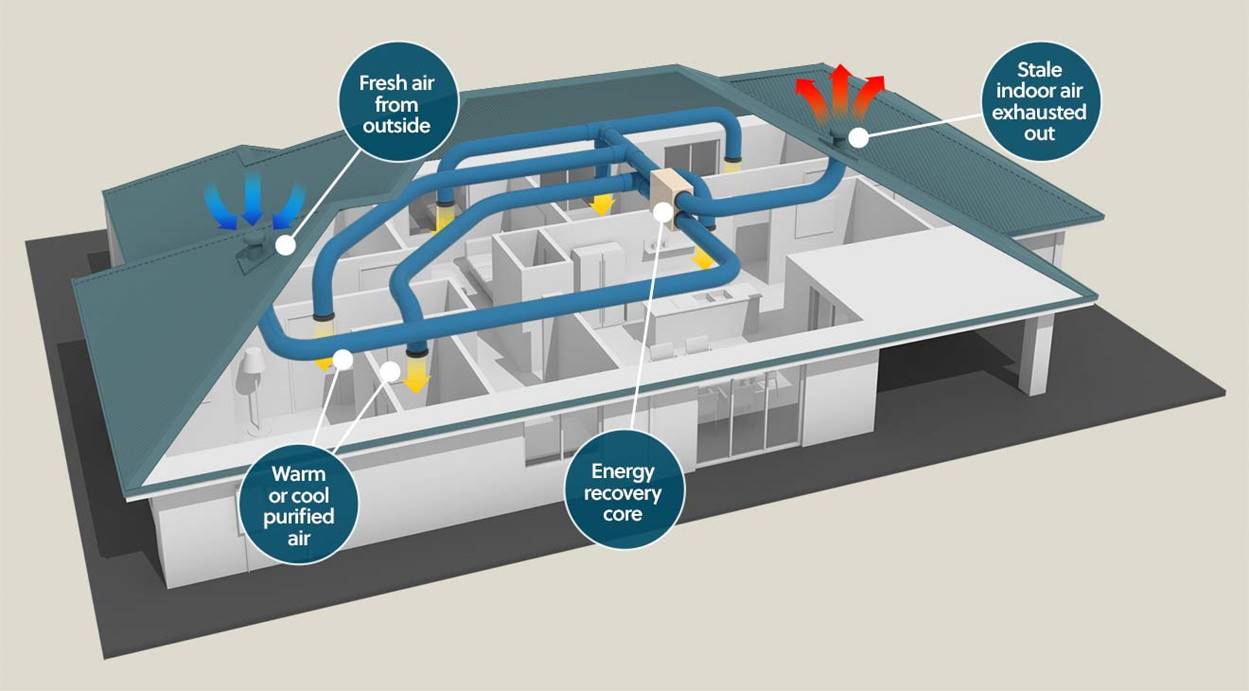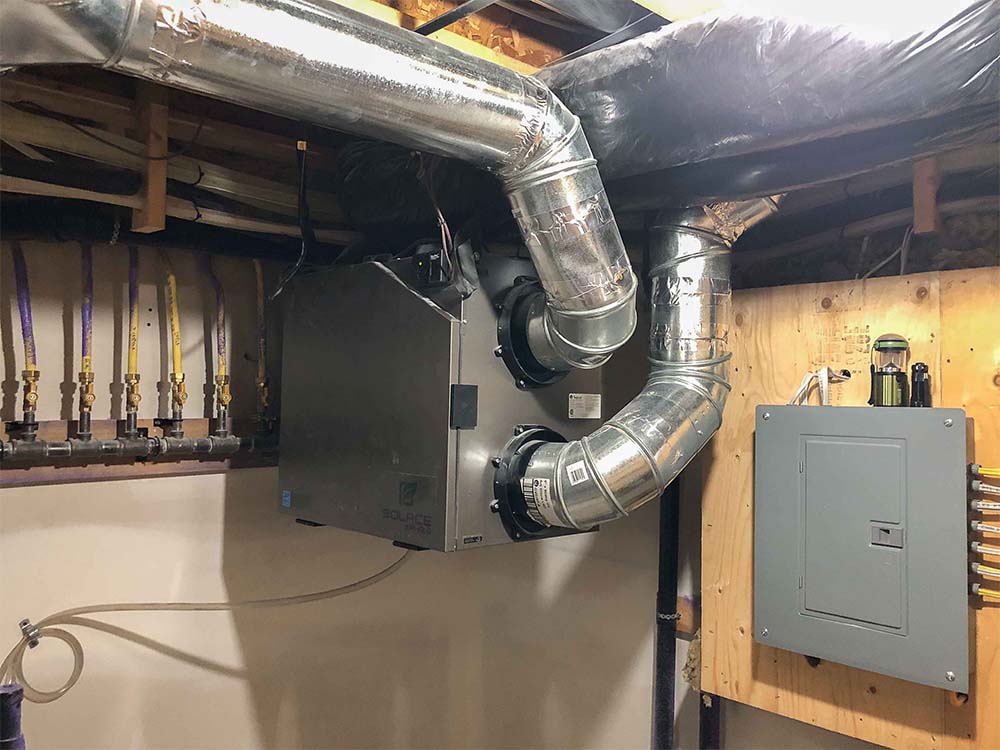Energy Recovery Ventilation Systems
- Home
- Solutions
- MEP Solutions
- Energy Recovery Ventilation Systems

Energy recovery ventilation systems (ERV) is a mechanical ventilation system that helps in decreasing energy loss thus reduce operation cost.
The system transfers heat between exhaust air to supply air streams through a heat exchanger, which can be very beneficial in winter.
This also applies in summer, where the cooled air from inside is transferred to the hot/ warm air supplied, to help reduce its temperature resulting in cooler ventilated air supply.
To supply fresh air into the property, the system is connected to the heating and cooling system (A/C) using two fans.
The system helps in reducing the entrance of allergens, pollen, dust and other contaminants; to ensure air clarity and cleanliness.
Energy recovery ventilation system types
There are 2 main types of energy recovery ventilation; Energy recovery ventilators ERV and Heat recovery ventilators HRV. Both systems come with a heat exchanger and a minimum of one fan to push air through the system.
Some designs can be installed on a wall or window; however most of the time, it’s central ventilation for the whole house using the duct system.
ERV:
It’s a sensible and latent recovery device that uses heat from inside exhaust air to warm up fresh supply air, it can recover dry energy (heat) and latent (moisture) energy, making it effective in any weather.
Resulting in less energy used to raise the temperature of outside supply air, saving money on overall energy bills.
The system consists of 4 media-component choices; rotational heat exchanger, fixed core-plate heat exchanger, heat-pipe heat exchanger and runaround coils.
- The rotational heat exchanger is a low initial cost & easy to maintain way to transfer heat between air streams (exhaust and supply air). For recovering both heat and energy, a plastic heat exchanger impregnated with a desiccant is used.
- The fixed core-plate heat exchanger comes with no mobile parts, it transfers energy between air streams by moving air through pipes passing by each other. It can be found in metal that only transfers heat, plastic that can transfer heat and/or moisture (2 models) or paper plates that transfer both heat and moisture.
- The heat-pipe heat exchanger is copper tubes with an internal refrigerant that can only recover heat.
- The runaround coils are used in case there is a distance between exhaust and supply airflow. Two water coils are installed, one in each airstream duct to transfer heat between the airstreams.

HRV:
It’s a sensible-only device, which means that the system can recover dry energy (heat) but not latent (moisture) energy, making it less effective in cooler weather.
Benefits of energy recovery ventilator
Installing ERV benefits include:
- Raising air quality by filtering inside air from allergens and other contaminants, and supplying the space with fresh clean air and fresh oxygen.
- Health benefits for allergic and asthmatic patients
- Energy efficient
- Control moisture and heat levels
- Extending HVAC system lifespan
ERV or HRV
Choosing the system suitable for your space depends on:
Climate:
ERV is more suitable for cold dry weather, HRV is more suitable for hot, humid
Property size and the number of residents:
The more the house residents, it’s more suitable to install an ERV system. As more people in the house increases the use of hot water in the shower and the use of the kitchen, which creates more moisture. Unlike a house with fewer residents.
Health considerations:
In case one or more of the family members have health problems like allergy or asthma it’s better to install an ERV system.

Alternatives in the market
Maintenance
Both systems do not require high maintenance. Filters need to be cleaned or changed 3-4 times a year, however, it’s better to maintain the filters more frequently if there are pets or smokers living at the house.
